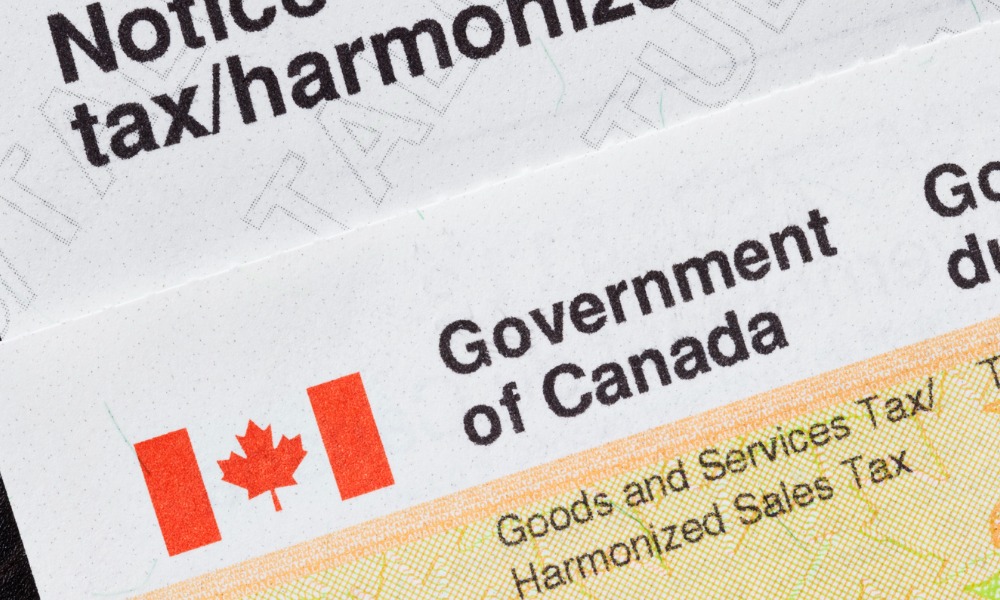The Canada Revenue Agency’s notice of assessment is a crucial document for taxpayers and investors. Read on to learn more

- What is the notice of assessment from the CRA?
- Is the notice of assessment the same as a tax return?
- What is the purpose of a CRA notice?
- What does a CRA notice of assessment look like?
- What should I do if there is an error or discrepancy in the NOA?
- Do foreign investors have to file income tax returns in Canada?
- As an investor in Canada, can I ask someone else to file my tax returns?
- Are my foreign investments taxable in Canada?
- What happens if I fail to pay my taxes in Canada?
- Should you keep your notice of assessment?
- When can you get your refund after receiving your NOA?
Some years ago, the Canada Revenue Agency (CRA) conducted a survey to find out why some tax filers weren’t looking at their notices or letters. The results of the survey were not too surprising: the main reason was “to avoid suspected stressful content”.
While it is true that most people do not like the potential stress of seeing the taxes they owe, this is not a valid reason for anyone to ignore these notices.
In this article, we discuss some topics about the notice of assessment: what's in it, what to expect from it, and what to do if you’re an investor, along with other important items.
What is the notice of assessment from the CRA?
The CRA notice of assessment or NOA is a document sent to you after you’ve filed your tax return.
The notice of assessment is a government-issued estimate of income taxes that are owed by the income tax filer for a specified tax year. It essentially works as a receipt from the CRA that you have successfully filed your income tax return. It is also proof that it has been reviewed by the CRA.
Should there be any errors or miscalculations on the tax filing, corrections to your income tax return will also appear on the notice of assessment. You can expect to receive a notice via email within 2 weeks, or via regular snail mail in 8 weeks after submitting your tax return.
The CRA notice of assessment is a summary of your income and shows all the credits and deductions you’ve claimed on your taxes. The notice of assessment also informs you if you are getting a tax refund or if you owe any money to the CRA.
Is the notice of assessment the same as a tax return?
No, they are not the same. A tax return, also known as the T1 or T1 General, is a form filled out by taxpayers and submitted to the CRA. The notice of assessment is then drafted based on the taxpayer’s T1, then sent to them as proof of receipt.
In simpler terms, the CRA notice of assessment is a summary of a tax return. If the T1 or tax return and NOA will ever be considered similar, it’s only in the sense that they are both sources of information for a taxpayer’s income tax.
What is the purpose of a CRA notice?
Apart from being a summary of a tax return, the CRA notice of assessment can serve as confirmation that the taxpayer’s estimate of their taxes owed aligns with that of the CRA. It also serves as an acknowledgement from the CRA that their tax returns were received.
What does a CRA notice of assessment look like?
A typical CRA notice of assessment is a simple document that summarizes the content of a taxpayer’s T1 form. The document consists of four main sections:
1. Account Summary
This section provides the result of an assessment or reassessment of a tax return. The account summary can list:
- A tax refund amount
- No taxes owed or zero balance
- A balance owed to the CRA or unpaid taxes
- Concurrent assessment or reassessment
In the case of the concurrent assessment or reassessment, this is included in the account summary if the tax filer submits returns for several consecutive tax years at the same time.
For example, if you file income tax returns for the years of 2019, 2020, 2021, and 2022 together, then you can expect to receive a notice of assessment detailing all those returns combined. This concurrent assessment or reassessment will appear on the last NOA of that series.
Likewise, if a tax filer sends new information that changes the returns of several past consecutive years, a concurrent assessment or reassessment is issued.
2. Tax Assessment Summary
This section lists the main lines on an assessed tax return. Each line will contain amounts that the CRA used to calculate the tax filer’s balance.
It is the tax filer’s duty to view and compare these amounts to those filed on their income tax return to see if there are discrepancies between the tax return and the NOA. Any changes made by the CRA will appear in this section.
This section also shows any penalty and interest the CRA calculated on a tax filer’s tax refund or tax amount owed. Any owned balances from a previous assessment will also appear here.
3. Explanation of Changes and other important information
In this section, you can find detailed explanations as to the changes or corrections the CRA made to your tax return. Note that the changes are based on the information sent with your return and the information that the CRA has on file.
Should a tax filer have new information that changes the returns, they must use the “How to Change your Return” facility of the CRA website.
If you disagree with your assessment or reassessment and want to register a formal dispute, see complaints/disputes. You have 90 days from the date of the notice to register your dispute.
4. Statement of RRSP Deduction Limit
This section details the tax filer’s deduction limit for their Registered Retirement Savings Plan or RRSP. The RRSP deduction limit is the amount of RRSP contributions that you can deduct for next year’s tax return. This statement also provides in detail how the CRA came up with the RRSP deduction limit based on the information in the submitted tax return and what the CRA has on file.
To get a glimpse of how the CRA notice of assessment might look like, here’s a short video:
Available Contribution Room
The last line of the statement details your available contribution room, or the maximum amount you can contribute for next year. This is simply computed by subtracting the RRSP contributions from past years from the deduction limit. Amounts of unused contributions will appear in this section.
Should the total current and unused RRSP contributions claimed on the return be less than the deduction limit, that is deemed as available contribution room.
Excess Contributions
Excess contributions to the RRSP will be shown here. If the RRSP contributions are more than the deduction limit, this is considered an excess and therefore is listed as taxable income. You can read up more on how contributions can affect an RRSP deduction limit.
Additional sections on the NOA
Other sections may appear on your CRA notice of assessment, such as if or when you use the Home Buyers’ Plan (HBP). The HBP uses a portion of your RRSP; should you use this feature, then an HBP statement will be included in the assessment or reassessment. The remaining balance owing and minimum required repayment to the RRSP will show up here.
If you repaid less than the minimum to your RRSP, then that difference must be included in the income tax return and will be taxed accordingly.
Should you be eligible for the LLP or Lifelong Learning Plan and use it, this will also appear as an additional section of your assessment or reassessment.
Any amount owing and the minimum required payment for next year will be reflected in this section. If less than the minimum amount is paid, the difference must be included as RRSP income on the tax return.
What should I do if there is an error or discrepancy in the NOA?
If there are discrepancies in the notice of assessment, the CRA will make the necessary corrections to your income tax return. These will appear on the notice of assessment.
In the case of errors that the CRA may not know about, it’s the tax filer’s duty to inform the CRA to make the changes. The tax filer has 90 days after receiving their CRA notice of assessment to make a formal request to correct the errors.
The tax filer may also use this time to make a formal objection to any information on the CRA notice of assessment or make changes to any information on their tax returns.
Do foreign investors have to file income tax returns in Canada?
In some cases, yes, some types of foreign investors need to file Canadian income tax returns. This applies if they are deemed non-residents who made or have income or property in Canada.
Figuring out taxes for non-residents who still earn or have property in Canada can be complicated. A good way to handle this would be to hire a financial advisor.
As an investor in Canada, can I ask someone else to file my tax returns?
Yes. You can hire an experienced financial advisor to handle your taxes, apart from your investments or assets. Handling client’s tax returns can be part of a financial advisor’s roster of services. They may even assist you in finding tax shelters or tax benefits to maximize the returns on your investments in Canada.
Are my foreign investments taxable in Canada?
Yes. If you have investments outside the country and get income from them in the form of interest, dividends or capital gains, their equivalent value in Canadian dollars must be reported on your Canadian tax return to be taxed accordingly.
Foreign dividends do not qualify for the dividend tax credit. Interest-bearing investments like Certificates of Deposit (CDs) from the US, for example, are taxed as income.
You may be able to claim a foreign tax credit if you already paid taxes in the country where your investments are to avoid double taxation.
If you own foreign property amounting over $100,000, you are required to fill and submit complete form T1135, the Foreign Income Verification Statement, which can be filed electronically.
What happens if I fail to pay my taxes in Canada?
The CRA has the right to take legal action against you if it’s discovered you intentionally refused to file or pay taxes.
Failing to pay taxes is not a crime, especially due to circumstances beyond your control (losing your job, for example). But not filing your income tax on purpose is a criminal offense and punishable by law.
Section 238 of the Income Tax Act states that offenders will have to pay a fine ranging from $1,000 to $25,000 and face up to a year in prison.
Meanwhile, Section 239 states that a person guilty of tax evasion must pay a fine equivalent to 50% to 200% of the amount they avoided paying, along with the owed amount.
Tax evaders can also an additional two-year prison sentence – and that's just for the criminal liability.
As for the civil punishment, the CRA may garnish any income or bank accounts you have. This means that a portion of or your salary will go straight to paying the CRA. They also have the option to seize and sell your assets to settle your unpaid taxes.
If you’re a financial advisor and your client fails to pay their income tax, then the CRA may similarly garnish all their investments.
Should you keep your notice of assessment?
The CRA suggests that you keep your copy of your notice of assessments and other related documents for at least six years. It’s within this period that the CRA is allowed to review your tax return and verify your information and transaction data.
When can you get your refund after receiving your NOA?
If you used NETFILE, the CRA online service, and filed on or before the deadline for filing, your tax refund can take 2 weeks.
If you chose to file via regular mail, then this could take up to 8 weeks. However, if you live outside of Canada and filed as a non-resident, this can take up to 16 weeks. Finally, if the CRA decides to make your tax return subject to an audit, this can further delay your refund.
Whatever occupation you have, your CRA notice of assessment shouldn’t be seen as something to fear. It may not always remind you of your unpaid taxes. Depending on your circumstances, you might be pleasantly surprised with a zero balance or even a tax refund! So always file that tax return on time and check your CRA notice of assessment when it arrives – you may need to address issues that are time-sensitive, like tax refunds or errors in taxes owed.
Now that you know more about the notice of assessment from the CRA, will you still be stressed to see it in your mailbox or inbox? Share your thoughts in the comments!



